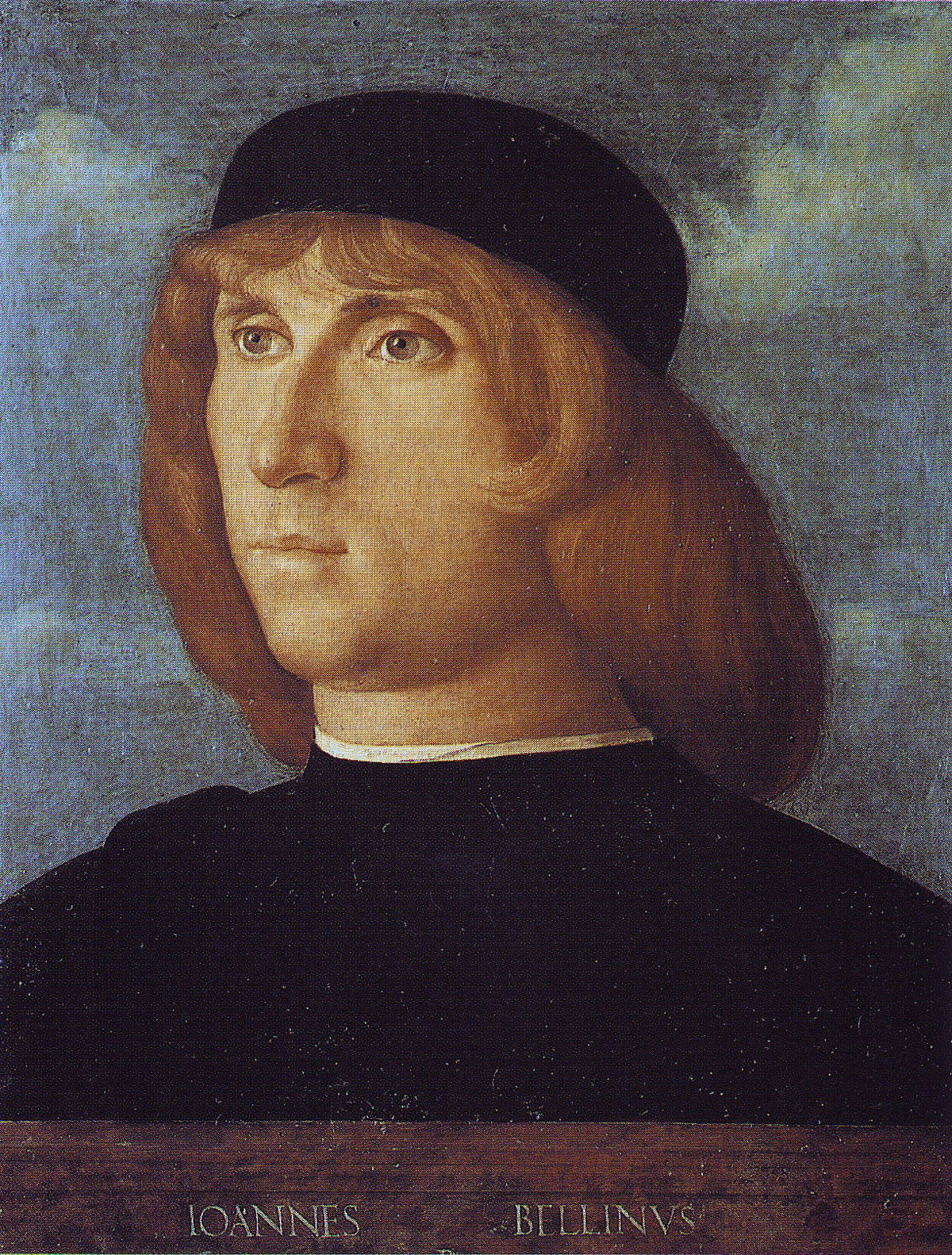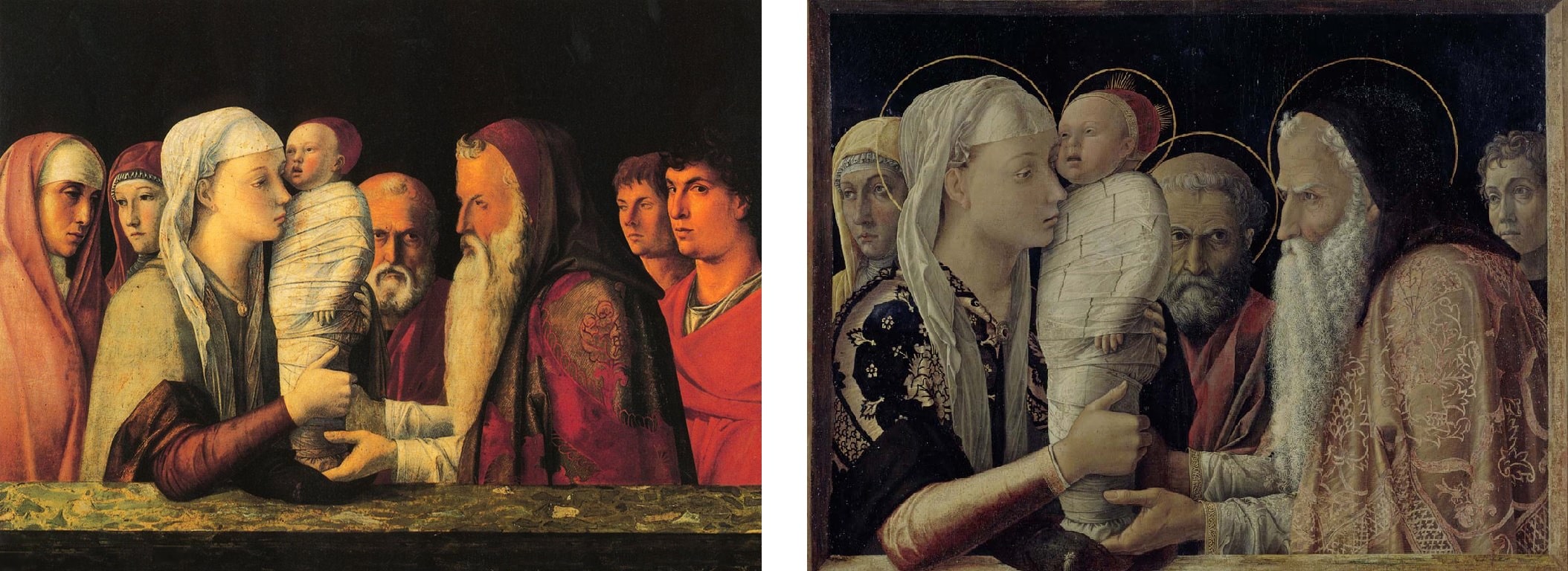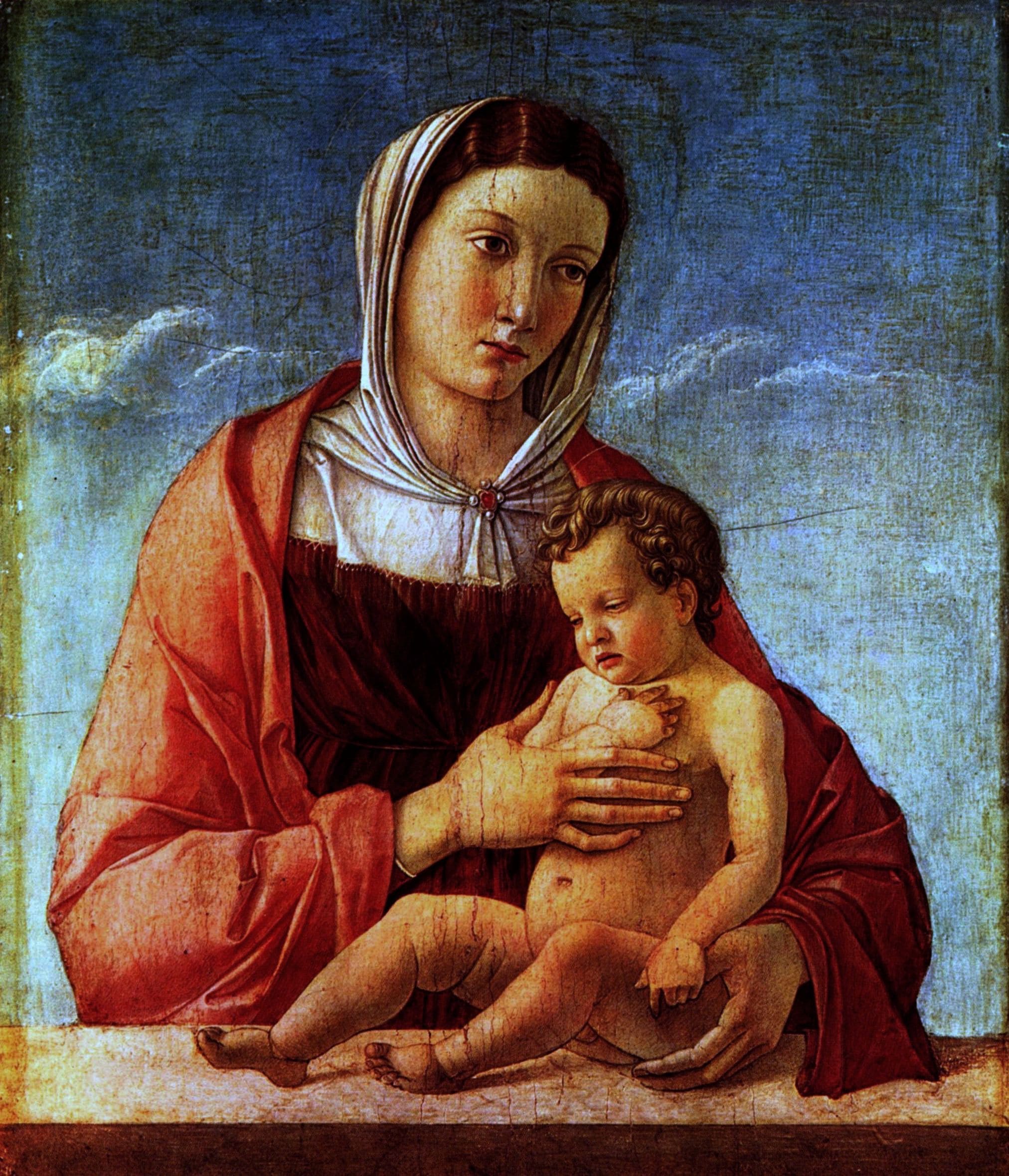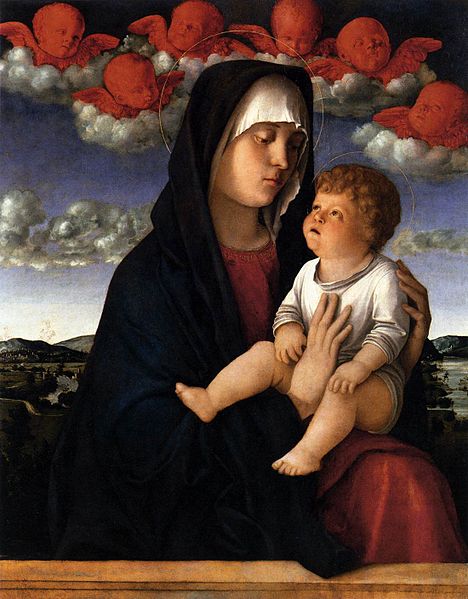At the beginning of the 15th century, Venice was living its dream. Thanks to the actions of great doges and condottieri, the city reached its maximum expansion, overshadowing lands until Milan and waters up to Cyprus. The life, within the lagoon, developed flossy and vibrant. Spunk sailors used to come and go from the biggest harbour of the world, unscrupulous merchants from exotic regions would do lucrative businesses in the shade of Saint Mark’s tower, while witty politicians used to close deals with powerful figures at Doge’s Palace nearby. All over the centre silk, velvets, glass, silver, spices and damask could be found. Splendour and prosperity permeated houses and palaces, decorated by artists of all kinds, charmed into the city by the great deal of possibilities it offered. Slowly Venice turned into a hub of culture and innovation, resembling cities of the calibre of Florence and Rome.
Such a sparkling environment was the perfect cradle for a Venetian boy, who grew surrounded literally by brushes, canvas and paints. This artista enhanced greatly the artistic vision of the city, giving it a precise direction and, specific nuances, and ultimately led its art to the glory. It was Giovanni Bellini, the father of Venetian painting and one of the most outstanding names of the Renaissance art. His artistic attitude was challenging, his personality interesting and the masterpieces he left all around Venice are an anthem to colour and sweetness.
Giovanni Bellini lit up the spark of Renaissance in Venice

A vail of mystery conceals the first years of Giovanni Bellini’s life. Certainty, he was born in Venice, yet the date of birth is uncertain due to a lack of documents and official evidence, but most probably, he was born around the 1430. His father was the successful Venice’s painter Jacopo Bellini, but it is unsure whether he was an illegitimate child, conceived outside the marriage between Jacopo and his wife Anna Rinversi. Nevertheless, he was raised as a beloved son by Bellini’s family, together with his brother Gentile, another famous painter and their sister Nicolasia.
Around the age of 15 he joined the paternal studio with Gentile, learning the artistic techniques from the most important masters of Venice and creating together artworks for patrons all over Veneto.
Giovanni inherited his abilities from his father, yet, he immediately looked for other various and different influences. Venice was a cosmopolite and moving place, and the young artist totally embraced this spirit, becoming the authentic voice of an art representative of the city.
He, indeed, was a tireless investigator, with an inner need to discover what was new and to research the works of other artists. In his art, therefore, it is possible to detect many influences, from the Byzantine tradition and the Italian Renaissance art, to the distant Flemish painting. Passionate explorer of artistic expressions, during his long life, he never stopped experimenting, keeping himself always open to new and different approaches.
Not only Bellini was a curious seeker, he was also a pioneer. For many years, since the beginning of Renaissance in Florence, in 1402, the Venetian painting preferred to keep faith to the tradition, enclosed in a golden and immobile Late-Gothic isolation. This delay was due to the need to imagine a new art, without just simply copying the new tendencies from Tuscany, yet, finding its own path. Giovanni Bellini was the one who paved the way. His style opened the doors to the Renaissance in Venice, with a unique maniera, totally based on the use of colours.
Bellini and Mantegna: the perk of having an artist as brother – in – law

Giovanni met the Paduan artist Mantegna when the latter married in 1453 his sister Nicolasia. Not only the two men became brothers – in –law, yet they soon started to weave a relation of friendship and artistic cooperation. This encounter was really beneficial for Bellini, since the style of Andrea greatly influenced his painting technique. His drawing got a bit harder and metallic and his figures more volumetric. Yet, he never neglected his own personality and stayed always true to himself, blending his style with Mantegna’s external impulses.
The perfect way to understand this fusion of ideas within Bellini style is through the comparison of the same theme, developed by both Giovanni and Andrea. At Fondazione Querini Stampalia, it is housed the painting “Presentation at the Temple” (picture on the left), from 1460, alike and immediately subsequent to the artwork of Mantegna, dated 1455, today visible at the Staatliche Museen in Berlin (picture on the right). The characters are nearly the same in both works.
In Bellini’s version the Virgin is holding the Child in the centre of the composition, with the bearded Simeon about to grab him. In the front, even though standing in the background, there is Saint Joseph, which, according to some academics, may represent Bellini’s father, Jacopo. On the sides, lie other figures, two women on the left, perhaps portraits of Nicolasia and Bellini’s mother Anna, and two men on the right, representative of the painter and his brother-in-low.
If Mantegna gave the characters a plastic weight and embossed shapes, as if they were high relief more than portraits, in Bellini, everything is softer and lighter. The former had a rough mark and dark colours and his figures stifle the space, spreading a sense of torment and pathos. On the contrary, Bellini arranged the scene fluidly, with a cosy light permeating the entire space. The shapes are gentle, the lines are winding and the colours are less gloomy and more natural. In a word, Mantegna was epic, Bellini lyrical.
From this comparison, it is possible to clearly understand the biggest innovation of Giovanni’s style. The general effect is not, like in Andrea, volumetric and therefore, sculptural, yet it is based on the nuances of colours and on the power of the light. Thus, the outcome appears purely pictorial.
Such a great achievement opened the era of the Renaissance art in Venice and became also the premise for the tonal painting of the following generation of artists, including Giorgione and Titian.
The series of Virgin Mary with Child

In the 1460s, Giovanni Bellini started his series of Virgin Mary with Child. These artworks are medium size paintings aiming to a private and intimate devotion. In Venice, they were really popular, maybe because of the ease of transport and sale. Looking closely at some of these works, it is impossible to overlook a great deal of stimuli from other styles. The Byzantine art can be retrieved in the iconographic fixity of the two figures. From the Flemish painting, instead, the artist selected the thorough attention to details and finally, from Florence, especially from Donatello, who sojourned in Padua from 1443 to 1453, he assimilated the new linear perspective and the Renaissance’s idea of the importance of men. According to this revolutionary concept, individuals were worthy of being represented as the hub of the composition, and realistically, both in the shapes and in their emotions. However, as specified above, Bellini never betrayed either himself or his own characteristics, yet he enhanced them.
One of his first versions is the Frizzoni Madonna, painted between 1460 and 1465, today at Museo Correr. Here, the Child is sleeping, hugged tenderly by his Mother, who stares at the world with a soft, bittersweet expression. The composition is intimate, yet she is also silently communicating with the audience, expressing her love for the son and her awareness of his difficult destiny. Bellini’s figures are alive and extremely poetic. They always present an emotional and touching tension, a deep pathos, which spreads from the couple, to the spectator in front.

Another example of the series is the Madonna of the Red Cherubim. This oil painting of circa 1485 can be admired at Gallerie dell’Accademia. Compared to the previous one, this was executed later and, therefore, it can give some insights about the development of the artist and his style. At this point, the painters Piero della Francesca, with his brightness and perspective rigor, and Antonello da Messina, with his soft colours and careful attention for the details, had already influenced Bellini, who masterfully merged their example to his style.
The main characters are, obviously, the Virgin and the Child, portrayed as a bust in the foreground. Behind, a vast landscape opens up, teemed with hills, a fluvial inlet, castles and towers. Bellini did not re-invoke ancient Roman buildings, as usual at the time, yet, the scenery is modern and real, since he decided to stick to the truth, representing the world as it appeared.
Moreover, the clever use of colour, as unifying element of the artwork, here is evident. The artist made use of warm colours for the foreground and of cold colours for the following grounds, aimed to give a natural sense of depth. This technique is called chromatic perspective, a perspective achieved only through the wise use of colours. This also allowed Bellini to play with the complementary colours, pulling them together in order to enhance the brightness of the entire scene. This “magic” can be seen on Mary’s dress, or on the bright sky featuring a group of cherubim, where the red and the blue shape and enhance the figures. Finally, the stunning capacity in the representation of the shapes can be seen on the splendid Virgin’s hands, or on the creases of the white clothing of Jesus; while the capacity of evoking emotions is expressed by the deep gaze linking the two characters.
The perfect balance between the sweetness and intimacy of the couple and the beauty of the colour is what makes the Virgin and the Child series, one of Bellini’s most emblematic works.
Giovanni Bellini’s masterpieces

Thanks to his acquired fame, Giovanni Bellini was nominated official painter of the Republic of Venice in 1483 and kept working for his city, being also the master of a flourish atelier. Around the 1470s he reached his maturity, touching the highest picks in his art. All the new innovations regarding the use of colours and all the elements absorbed from other Schools and colleagues, at this point, were perfectly assimilated in his artistic view, resulting in an elegant, natural and emotional synthesis.
In 1504 he composed the Giovannelli Sacred Conversation, an oil painting today at Gallerie delll’Accademia. It is called “Sacred Conversation”, because there is the enthroned Virgin, surrounded by saints. On her right side stands the figure of John the Baptist, easy to recognised by his typical beard, holding the long cane with the cross on top. On Mary’s left side, instead, a female saint appears, and, due to a lack in iconographic connotations, it is hard to determine who exactly she represents, maybe Mary Magdalene or Catherine of Alexandria.
Bellini was keen on representing the individuals in connection with the nature, so shifting slightly from the Florentine perception. Therefore, even though the figures still stand out from the background, here, a balanced union invades the entire scene. The landscape behind the saints is deep and broad, characterized by castles, a city with a harbour and boats, a village and plain fields with a shepherd and his herd. Further away, the silhouette of mountains peeks out high and sharp. These are depicted with a tonality of light blue, recalling the fog of the horizon, while a golden light invades the entire composition, merging humans and the surrounding world. The effect of the scene is intense: the face expressions are gentle and poetic, the figures are real and plastic, yet, not sculptural but soft and delicate, the landscape is vibrant and authentic: everything is part of a homogenous composition.
-min.jpg)
In the Church of Saint Zaccaria, it is collocated the Saint Zaccaria Altarpiece, composed by Bellini in 1505. This masterpiece marked the beginning of the painter’s dynamic last phase. Even though he was old, he did not lose the spark, characterizing his art until that moment. He was 75 years old, famous and appreciated, yet he was still following his desire of knowledge and experimentation. With awareness and finesse, he managed to understand the modern trend of his student Giorgione, the so called tonal painting and, of course, he embedded it, adjusting and adapting its elements to his personal poetic.
The Altarpiece is a great representation of these last years. It shows another sacred conversation between the Virgin and four saints, together with another protagonist of the composition: the stunning architecture. Bellini, indeed, set the scene in a spacious circular niche, composed of a golden vault with mosaic, decorated columns, polished arches and a basement of marbles. This architectonic composition is open on the sides, revealing a natural landscape, from where the rays of the sun come in, lighting up the space and the figures with golden brightness. Even though the work has been moved from his original position, the fusion between the painted and the real architectures is still visible, with the former enhancing by the latter.
The figures also shape a sort of human architecture. The Virgin sits in the middle of the composition, in a raised throne, with the Child in her harms. Over her head, a sober Venetian lamp and an ostrich egg, symbolizing the purity of Mary’s maternity, hang from the ceiling. At her feet, a musician angel is playing the violin, while on the corners of the bay four saints are standing symmetrically. They are Saint Catherine of Alexandria and Saint Lucy, facing each other and pointing internally; Saint Peter the Apostle and Saint Jerome, meditating and turned towards the spectator. The characters are deeply concentrated, but express a peaceful serenity. The scene is unique and intimate, the figures are pictorial and soft, and the light creates a warm and contemplative atmosphere. The nuances of colours and shades are the ultimate proof of Bellini’s acceptance of the progresses of the new generation of Venetian painters.
Giovanni Bellini kept working until the end of his days, accompanying with his art the evolution of the Renaissance in Venice and, equally, developing his style with it, until the 29th November of 1516, date of his death. His artistic approach was always characterized by the harmonic dualism between innovation and tradition. He constantly kept his mind open to new experiences, so as to renovate and refine his maniera, without denying his true self, yet using it as his main strength. Everyone, from his days until now, has hold him in high esteem, as the emblematic words of the famous Durer show: “Everyone told me he was an exceptional man and, indeed, he is like this, and he is truly a friend of mine. He is really old, yet, surely, he is still the greatest painter among all”.










Lascia un commento